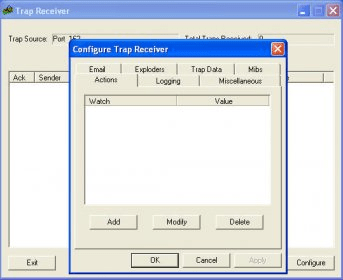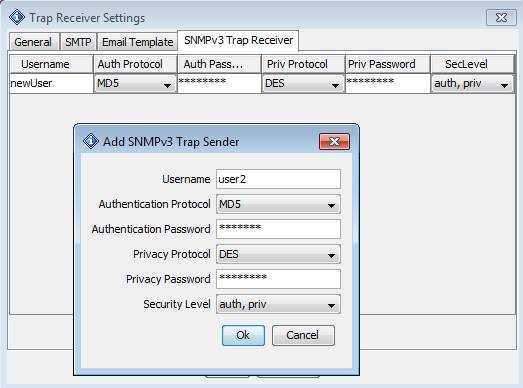

Collect Data - Select/clear check box to enable/disable data collection for the monitored component.The received traps are displayed as external alarms in the User Console. If this option is not selected, the monitor instance receives and processes SNMP traps from all devices. The received traps appear as alarms in the Device/Group/Service Matrix in the User Console. If the option is selected, the monitor instance receives only those traps generated by the device under which it is created. Device Associated - Select/clear check box to associate/disassociate the traps to the device under which the monitor instance is being created.There are no system-populated configuration attributes associated with this monitor.

Alternatively, click Create/Edit to open the XML editor to create a new trap configuration file or edit an existing one. Click Load to load the configuration files in the system. The monitor uploads this file and imports varbind descriptions as events/alarms. VarBinds File - Specify the name and location (on ProactiveServer) of the file detailing OID variable binding descriptions.Port - Specify the port on which the system receives traps.Infrastructure Management Analytics recommends that the target IP and the IP address of the device where the monitor is being created be the same. This field value is used only when the control attribute Device Associated is activated. This field is used only when Device Association has been activated. Target IP/Host Name - Specify the name/IP address of the machine from which the traps will be received.Source Agent - Select the agent that listens for traps.Deleting a Tag Value on Enter Tag Details screen: Select a tag value and click Delete, click Yes to delete the tag value.Make the necessary modifications in Tag Value text box and click Set to add the changes. Editing Tag Value on Enter Tag Details screen: Select a tag value and click Edit.You cannot enter special characters &"/' in the tag field. The tag specified by you is not considered as a default class. Select Tag Class from the drop-down list and enter a tag value, click Add to append tag class and value.

Click the icon + to select a default tag class. This gives you the option to group objects in different forms. You can enter multiple name-value pairs, text, or include both (name-value pair and text).


 0 kommentar(er)
0 kommentar(er)
